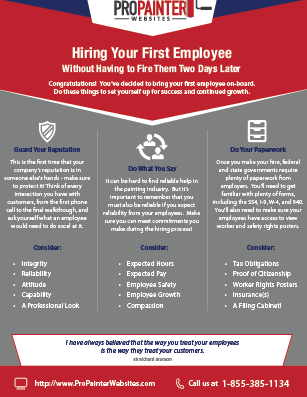Learn Just How Seasonal Factors Influence Commercial Outside Painting Success And Discover The Most Effective Times To Make Certain Long-Term Results For Your Task
Learn Just How Seasonal Factors Influence Commercial Outside Painting Success And Discover The Most Effective Times To Make Certain Long-Term Results For Your Task
Blog Article
Uploaded By-Leach Browne
When you're planning a commercial outside paint job, seasonal elements can make or break your outcomes. You'll want to consider exactly how temperature level and moisture influence paint application and drying out times. Choosing the right season can guarantee your paint adheres appropriately and lasts much longer. However which baluster painter are absolutely the very best for this kind of job? Allow's explore the key elements that can influence your project's success.
The Effect of Temperature on Paint Application
When you're intending a business external painting project, the temperature can substantially impact just how well the paint adheres and dries out.
Ideally, you intend to repaint when temperature levels vary in between 50 ° F and 85 ° F. If it's as well cold, the paint may not heal properly, leading to issues like peeling or splitting.
On the other hand, if it's as well hot, the paint can dry out too quickly, stopping correct attachment and resulting in an uneven finish.
You should additionally think about the moment of day; early morning or late afternoon offers cooler temperature levels, which can be more desirable.
Always inspect the maker's suggestions for the details paint you're utilizing, as they commonly supply guidance on the excellent temperature level array for optimum results.
Humidity and Its Impact on Drying Times
Temperature level isn't the only ecological aspect that influences your commercial outside paint job; humidity plays a significant function also. High moisture levels can reduce drying times substantially, influencing the overall top quality of your paint task.
When the air is saturated with wetness, the paint takes longer to heal, which can cause problems like inadequate adhesion and a greater risk of mildew growth. If you're painting on a specifically moist day, be prepared for extensive delay times in between layers.
It's vital to keep track of local climate condition and plan as necessary. Ideally, go for moisture degrees in between 40% and 70% for optimum drying.
Keeping these factors in mind guarantees your job remains on track and provides a long lasting coating.
Best Seasons for Commercial Exterior Paint Projects
What's the most effective time of year for your commercial external painting projects?
Spring and very early autumn are commonly your best bets. During these periods, temperature levels are moderate, and moisture levels are commonly lower, developing optimal problems for paint application and drying out.
Stay clear of summertime's intense heat, which can create paint to completely dry also rapidly, leading to poor attachment and coating. Likewise, wintertime's cool temperatures can prevent proper drying out and healing, taking the chance of the long life of your paint task.
Go for days with temperature levels between 50 ° F and 85 ° F for optimum results. Bear in mind to examine the regional weather prediction for rainfall, as wet conditions can wreck your job.
Planning around these elements ensures your paint job runs efficiently and lasts longer.
Final thought
Finally, intending your industrial external paint projects around seasonal factors to consider can make a considerable difference in the outcome. By organizing work during the ideal temperature levels and moisture levels, you'll guarantee better bond and drying times. Suggested Reading in mind to keep an eye on neighborhood weather forecasts and select the correct time of year-- spring and early fall are your best options. Taking these steps will aid you achieve a sturdy and specialist surface that lasts.
